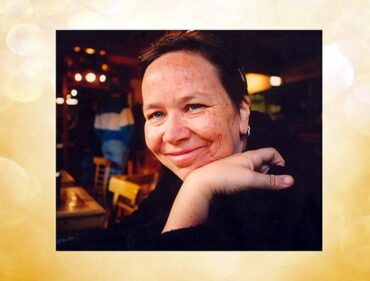Blog: Like Rays of The Sun, Radiating Outward: How Our Personal Work Affects the Collective
By Elizabeth Brinkman Day, Ph.D., CHT
Editors’ Note: Elizabeth Brinkman Day Ph.D., CHT is a Depth Hypnosis Practitioner, a Shamanic Counselor, a Somatic Leadership Coach and an Equine Guided Educator. Elizabeth holds a doctorate in Curriculum and Instruction from the University of Wisconsin, Madison. Her coaching and counseling practice is grounded in the innate intelligence of the mind-body-soul connection; the power of nature to teach and restore; a commitment to social justice and dismantling systems of oppression; and the sentient presence and feedback of horses. Elizabeth has been on the faculty at Santa Clara University for twenty years and teaches courses such as Compassionate Leadership and Cultural Competence and Humility. Elizabeth is fiercely dedicated to helping individuals discover patterns, move through obstacles, and reconnect with their inherent wholeness.
“Give me your tired, your poor/ Your huddled masses yearning to breathe free.” These iconic words from Emma Lazarus’ 1883 sonnet, “The New Colossus,” gracing the pedestal of the Statue of Liberty, are far from actualized in our country. The day before the Statue of Liberty’s inauguration in October 1886, the New York State Woman Suffrage Association met, agreeing that the statue was a symbol of hypocrisy, given that the monument was representing Freedom as a majestic female in a State where women were not yet free to vote.
Describing the social unrest at the time of the statue’s inauguration, Francesca Lidia Viano writes:
The statue was an enigmatic monument, speaking at once to the rich and poor, established and marginal, men and women. To a great degree these contradictions characterized the contemporary scene. The 1880s were turbulent years in America.
…Discrimination on the basis of race, gender, and ethnicity had long run deep in the American grain; now prejudice against foreign workers were joining those other bigotries. In 1865 the Thirteen Amendment to the Constitution abolished slavery, yet African Americans were still profoundly marginalized. Although women had won civil constitutional rights, they were banned from voting in most states and all federal elections. The bloody Indian Wars were forcing Native Americans onto reservations. In 1882 Congress passed the Chinese Exclusion Act, imposing a ten-year moratorium on the immigration of Chinese laborers, the very first law forbidding a particular group from entering the United States (p.4).
The Statue of Liberty holds the Declaration of Independence, a document that stood for independence from oppressive regimes globally, and yet had not been fully assimilated by the U.S. legal or political system.
Now, 134 years later, we are still fighting for justice. I want to believe Pema Chödrön in When Things Fall Apart when she proposes that inherent in all of us is a noble and awakened heart—Bodhichitta. I want to have confidence in the sacredness of the world, to be egoless – that is to say, like rays of the sun, radiating outward (p.61), embracing the unconditional well-being and joy that includes all different qualities of experience. Who wouldn’t want the “freshness, openness, delight in our sense perceptions” (p.64) that this egolessness promises? I want to believe, as Trungpa Rinpoche says, that “Whatever occurs in the confused mind is regarded as the path. Everything is workable. It is a fearless proclamation, the lion’s roar” (Chödrön, p.145).
Fear, according to Chödrön, is the natural reaction to moving closer to the truth. She recommends allowing for not knowing, welcoming it, meeting it. She invites us to welcome difficult feelings as our teachers, and to develop loving-kindness with ourselves while we relate honestly with our experience. We are here to study ourselves with kindness and clarity. And it takes fearlessness, discipline, patience, generosity of spirit, and work to remove the masks that obscure our essential nature.
Lady Liberty is a symbol of freedom in the purest sense. Is she akin to an undefended self? It takes courage to take off our masks, to take inventory of those parts of ourselves that are not in alignment with our highest self. This conscientious and compassionate effort is the ‘way forward’, the ‘path’ that leads closer to inner and outer peace. Can we get to the point where each person’s dignity is respected to the point that these ideals are actualized? Can we embrace that we are in a time of awakening with a clear call to action, thoroughly understanding the implications of doing our own internal work?
Excerpted from the essay June 4, 2020 on elizabethbrinkmanday.com.
Sources:
When Things Fall Apart – Pema Chödrön
Coming to Peace – Isa Gucciardi, Ph.D.
The Undefended Self – Susan Thesenga





